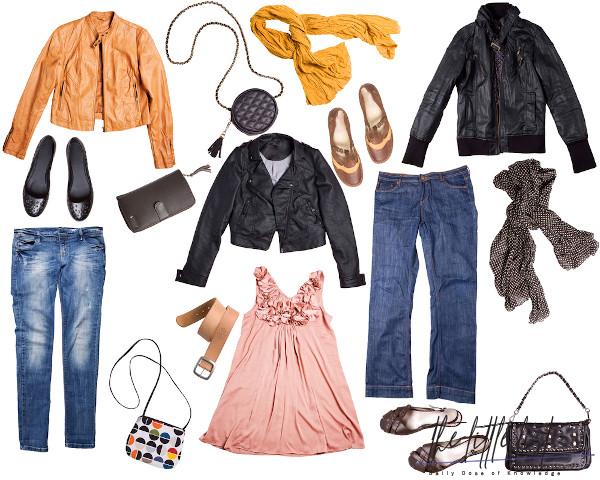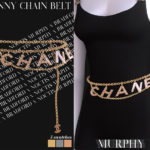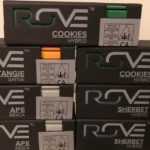Clothes and accessories
Clothes and, clothes and accessories in english, make up an extensive semantic field in the English language and are part of the group of concrete nouns, that is, they represent things that are in the real world, aiming first to dress people|1|. The theme of clothes and it materializes in different figures (words), varying from culture to culture.
The clothes people wear vary culturally because of different factors., including aesthetic, climatic, professional, gender, social motivations, among others. Thus, it is understood the wide variety of elements that can make up a wardrobe, for example. In addition, in the English language, the vocabulary of clothes and has aspects that differ from the Portuguese language, as with the verb “use”. In English, we cannot use the verb “use”, we must always employ “wear” (dress up). Consequently, it is necessary to be careful when studying the topic of clothes and accessories.
Read too: Parts of the body – body parts in English
List of clothes and
|
clothes |
Accessories |
|
bikini = bikini blouse = blouse boots = boots bra = bra cardigan = coat coat = coat dress = dress gloves = gloves high-heel shoes = high heel shoes jacket = jacket jumper = sweatshirt jumpsuit = jumpsuit pocket = pocket pullover = pullover raincoat = raincoat robe = robe shirt = shirt shoes = shoes skirt = skirt sleeve = sleeve slippers = slippers socks = socks suit = suit sweater = sweater sweatshirt = sweater swimsuit = swimsuit t-shirt = t-shirt tank top = regatta tennis shoes = tennis (British English) trainers = tennis (British English) underwear = underwear uniform = uniform vest = vest |
backpack = backpack bag = bag belt = belt bracelet = bracelet earrings = earrings handbag = small bag handkerchief = scarf hat = hat headband = hair band necklace = necklace purse = bag ring = ring scarf = scarf tie = tie wallet = wallet watch = watch wristband = bracelet |
Note that in the list there are some words that are in the plural, as they usually come in pairs — for example, shoes = shoes. But don’t forget that in this case and the other plural words in the list, we also have their singular form (shoe, slipper, boot, sock).
Clothes and
There are different ways to categorize the clothes. For example, we can sort them by gender or age group:
-
women’s clothes
(Feminine clothes) -
men’s clothes
(men’s clothes) -
baby clothes
(Baby clothes) -
children’s clothes
(children clothes)
Don’t stop now… There’s more after the ad 😉
We can also classify them according to the seasons:
-
winter clothes
(winter clothes) -
summer clothes
(summer clothes) -
autumn clothes
(autumn clothes) -
spring clothes
(spring clothes)
These categories are mainly used by department stores (department stores) and by fashion (fashion). Therefore, for anyone studying English, it is always important to understand the different types of clothes and practice the vocabulary that is so common in our daily lives.
You accessories complement the vocabulary on clothing.
The plural form of clothes and accessories
In the English language, certain words related to clothes and are always plural. in the list of clothes, we point out that some words were in the plural, but that they also exist in the singular form (earring, shoe, boot, etc.). In the list that follows, on the other hand, we have clothes and which are always plural. Therefore, these words must always be accompanied by the verb in the plural form.
-
briefs = underwear
-
glasses = glasses
-
jeans = jeans (pants made of denim)
-
leggings = legging pants
-
panties = panties
-
pants = pants (American English)
-
pajamas = pajamas
-
shorts = shorts
-
sunglasses = sunglasses
-
swim trunks = swim trunks
-
tights = pantyhose
-
trousers = pants (British English)
-
underpants = underwear or panties
Examples:
-
Her pants are old.
(Her pants are old.) -
These glasses aren’t yours.
(These are not your glasses.) -
His shorts have pockets.
(His shorts have pockets.)
See too: Possessive pronouns – possessive pronouns in english
specific verbs
It is important to emphasize that, in addition to the specific vocabulary of clothes and accessories, English language learners should be aware of the mobilization of other words and grammatical categories to talk about clothes in general. Below, we explore some important verbs to talk about clothes and.
Note the following verbs related to clothes and:
-
to wear = to dress, to wear;
-
to get dressed = get dressed;
-
to get undressed = undress;
-
to button = button;
-
to unbutton = unbutton;
-
to put on = wear, put on;
-
to take off = take off;
-
to fit = serve;
-
to try on = try;
-
to zip = zipper;
-
to unzip = unzip.
Examples:
-
She woke up and got dressed quickly.
(She woke up and dressed quickly.) -
I unbuttoned my coat because it is too hot.
(I unbuttoned my coat because it’s too hot.) -
Martha put on her running shoes.
(Martha put on her running shoes.) -
When I get home from work, I usually take off my shoes and put on my slippers.
(When I get home from work, I usually take off my shoes and put on my slippers.) -
She is wearing a blue dress.
(She is wearing a blue dress.)
Remember that, in English, the verbs to use/vestir in Portuguese are translated by the verb wear.
TIP: Taking into account the vocabulary studied, a good tip to learn these words and others that interest you is to create a picturery (picture dictionary) about the clothes and that you use the most in your daily life.
Also access: Adverbs of frequency – adverbs of frequency in english
 The word “clothes” is always in the plural.
The word “clothes” is always in the plural.
solved exercises
question 1 – (Uesp 2011) Read the text to answer the question:
NFL Supports Fight Against Breast Cancer
The National Football League (NFL) is joining the American Cancer Society (ACS) to raise awareness about the importance of breast screening and to raise money to help fight breast cancer.
NFL players, coaches and referees will wear pink during the month of October to remind women about the importance of getting mammograms and clinical breast exams to find breast cancer early, when it’s easier to treat. The program, A Crucial Catch: Annual Screening Saves Lives, is timed to coincide with National Breast Cancer Awareness Month. The American Cancer Society recommends 40 and older women have a mammogram and clinical breast exam every year, and younger women have clinical breast exams periodically as well.
Hats, wristbands and other apparel worn at NFL games, and special footballs and pink coins will be auctioned off and proceeds will benefit the American Cancer Society. Fans getting games are encouraged to wear pink.
The NFL also has a Web page where clubs and fans can register teams to participate in the American Cancer Society Making Strides Against Breast Cancer walk. This noncompetitive, inspirational event raises awareness and funds to help end breast cancer by finding cures and supporting programs and services for all people facing the disease.
Additionally, the Society’s advocacy affiliate, the American Cancer Society Cancer Action Network (ACS CAN), is participating in Crucial Catch by encouraging Congress to allocate more funding for cancer research.
Adapted from: .
In October every football fan will wear
A) the hat, wristband and other pink apparel at games.
B) pink clothes along with the players and the referees.
C) a football player’s uniform as part of the campaign.
D) pink women’s clothes to support the campaign.
E) pink clothes and other apparel at games if possible.
Resolution
Alternative B, because in these excerpts taken from the text “[…] will wear pink during the month of October” and “[…] Hats, wristbands and other apparel worn”, we noticed that players wear pink clothing for the support of the campaign against breast cancer and other apparel when possible.
question 2 – (Vunesp 2013 – adapted) Read the text to answer the question:
[…]
Frozen equipment I used a Canon, an EOS1 Mark III, a very powerful machine. The problem was the batteries. In the Siberian temperatures, they quickly lost power. On average, I take 2,500 shots per battery, but this time I could only take 300400 photos before the battery stopped working. I would put it inside my clothes, my assistant would give me another one, I would take 300 more pictures and, when that battery ran out of energy, I would take out the other one and it would work again.
In the excerpt – I would put it inside my clothes, my assistant would give me another one –, the word one refers, in the text, to:
A) battery.
B) camera.
C) clothes.
D) energy
E) pictures.
Resolution
Alternative A, because one replace the word battery in the quoted excerpt.
Note
|1| Longman Dictionary of Contemporary English Online. Available on this link.
By Patricia Veronica Moreira
English teacher
Find more articles in our categories Fashion & Looks & Luxe et encore 90s Outfits.
Thanks for visiting we hope our article Clothes and accessories | Clothing and Accessories in English
, don’t forget to share the article on Facebook, twitter and e-mail with the hashtags ☑️ #Clothes #accessories #Clothing #Accessories #English ☑️!



